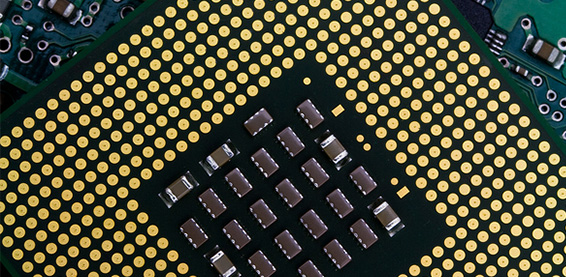
Since ancient times, gold has been one of the most prized of all earthly materials. The lustrous metal has served as a store of value in many cultures and is commonly used to make treasured items of jewelry. While gold is still coveted for these reasons, the modern age has introduced a new source of demand for gold—electronics.
The Unique Physics of Gold
Scientists classify gold as a noble metal: one that has a high resistance against oxidation, chemical interactions, and corrosion. Gold jewelry can sit in a pharaoh’s tomb for millennia or in a shipwreck at the bottom of the sea for centuries and still be as alluring and beautiful as it was the day it was made.
In addition to gold, the other most common noble metals include:
- Silver
- Platinum
- Palladium
- Iridium
Noble metals possess a high level of conductivity. While silver is the most electrically conductive element, it is just barely ahead of copper and gold. Copper is often used for wiring because it is much less expensive, and gold is the preferred electronics metal due to its molecular structure.
Gold can be stretched into incredibly fine wire. It is possible to stretch just one ounce of gold to a length of 50 miles (80 kilometers). This wire would be only 5 millionths of a meter thick, and this allows the material to be conveniently utilized in incredibly tiny chips and electronics components. Because gold is extremely resistant to corrosion, it provides reliable conductivity for many years. Gold used for the most precise electronic applications is often purified to a rare five-nines, or .99999 purity.
These unique characteristics make gold the metal of choice for many applications, and especially in fine electronics. Gold is used in many specialized chips as a connector, and it is specified for most edge connectors on a computer motherboard. The gold used is often electroplated onto other, less expensive metals to get the benefits of the noble metal at the lowest possible price. Likewise, the gold use is often alloyed with bits of nickel or cobalt to make it more durable.
In fact, a ton of smart cellphones will actually contain more gold than a ton of quality iron ore, and new technologies seek to retrieve gold from as many discarded electronics as possible.
The Laws of Supply and Demand
The laws of physics and supply and demand come together when discussing the price of gold and the world market for this precious metal. The more the demand for industrial applications (electronics, dental, aerospace and other) for gold increases, the more likely it is that gold prices will be affected. However, regardless of the upward pressure on prices, there is only a limited supply of gold on the planet. Increasing gold use in electronics, combined with higher demand and diminishing supply, is certainly an influencing factor when it comes to considering what gold prices will be in the future.


